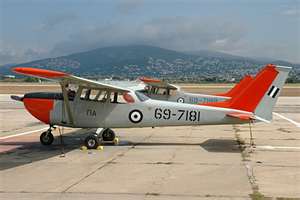At the close of the summit, the member countries issued a separate and special declaration (available in pdf format here) defining public security as a precondition for economic and social progress and calling for international cooperation, technical assistance and legislation to combat the illicit trafficking of weapons.
Mexico’s President Felipe Calderon also called on the international community to provide financial and technical assistance to the region and urged his counterparts in Latin America to strengthen legislative controls on the possession and use of firearms, ammunition and explosives.
These calls for a more regional approach to curbing arms trafficking were overshadowed by a controversial outburst from Ecuador’s president, the absence of 11 heads-of-state and the summit’s macro-economic themes.
But inside the summit walls, public security emerged as a top concern and representatives of a region struggling with high rates of violence and criminality used the platform to call for agreement on regulating the international arms trade. The surge in violent crime in Latin America has been particularly devastating to countries that have resources important to drug trafficking networks and relatively weak state institutions. Honduras, for example, is a transit country for the majority of cocaine smuggled out of South America and is on track to have the highest murder rate in the world.
A recent United Nations report (pdf available here) says that 31 percent of the estimated 468,000 intentional homicides committed around the world in 2010 occurred in the Americas. And firearms, which were used in 42 percent of violent deaths, “undoubtedly drive homicide increases in certain regions and, where they do, members of organized criminal groups are often those who pull the trigger,” according to the UN.
The ability of Latin American countries to control firearm availability certainly depends on international cooperation. Unfortunately, weapons transfers can take place on a relatively small scale without triggering attention from federal authorities. A variety of obstacles prevent stricter control over domestic guns sales in the U.S., such as powerful lobbying groups like the National Rifle Association and their congressional allies who block legislation that would tighten federal control over gun sales.
The availability of powerful assault weapons in the U.S. has likely had an effect on violence in the region. An analysis by blogger Diego de Valle illustrates how the expiration of the ban on assault weapons in the U.S. is correlated with rising homicide rates in the war against (and amongst) the drug cartels. Access to U.S. assault weapons may also be related to the rise in incidents of multiple homicides in Mexico.
The U.S. is an important player in controlling the circulation of illegal weapons in Mexico, but it is only one of many. According to arms expert Keith Krause, substantial quantities of weapons seized from Mexico’s criminals originate in Mexico or Central America. Honduras, for example, recently admitted that it cannot account for thousands of guns that disappeared from government warehouses. Many weapons that were funnelled to Central America to fight 20th century conflicts are still circulating today, fueling narcotics-related conflict in Mexico, El Salvador and Guatemala.
But controlling this market is a tall order for any country or region. The illicit global market for small arms and light weapons (SALW) is estimated to be worth approximately $1 billion dollars annually. Trade flourishes in part because of a large gray market of legal guns that become illegal when they are lost or stolen from government stockpiles. Government weapons and ammunition stockpiles that are poorly monitored can be diverted to this gray market with little risk because, in the absence of a universal marking and tracking system, it is difficult to trace to a “legitimate” owner and hold that person accountable.
The long career of international arms dealer Victor Bout, and his eventual capture in a DEA sting explicitly demonstrates of the need for a global treaty on the weapons trade, according to Oxfam International. Despite significant evidence of Bout’s participation in illegal weapons sales, he was able to continue to sell guns and fuel conflict in the world’s worst war zones for two decades.
Currently, only 73 (out of 154) countries regulate trade in light weapons and, of those, only 56 have laws criminalizing their illicit transfer. The lack of a global treaty addressing the trade in SALW allows gun traffickers to avoid both arrest in countries that lack penalties and extradition to countries with comprehensive, enforceable laws.
Currently, commodities like bananas and electronics are highly regulated under international law, but there are no substantial agreements requiring states to monitor and restrict transfers of arms and ammunition around the globe.
This may change. A proposed global Arms Trade Agreement will be debated in the UN next year. And while it will not eliminate the illicit trade in guns, it can reduce the availability of military-grade weapons on the shadowy gray market and clarify the fuzzy boundaries between licit and illict trade in weapons responsible for hundreds of thousands violent deaths. It may also give Latin American and Caribbean governments a template for further regional and domestic action on this issue.



